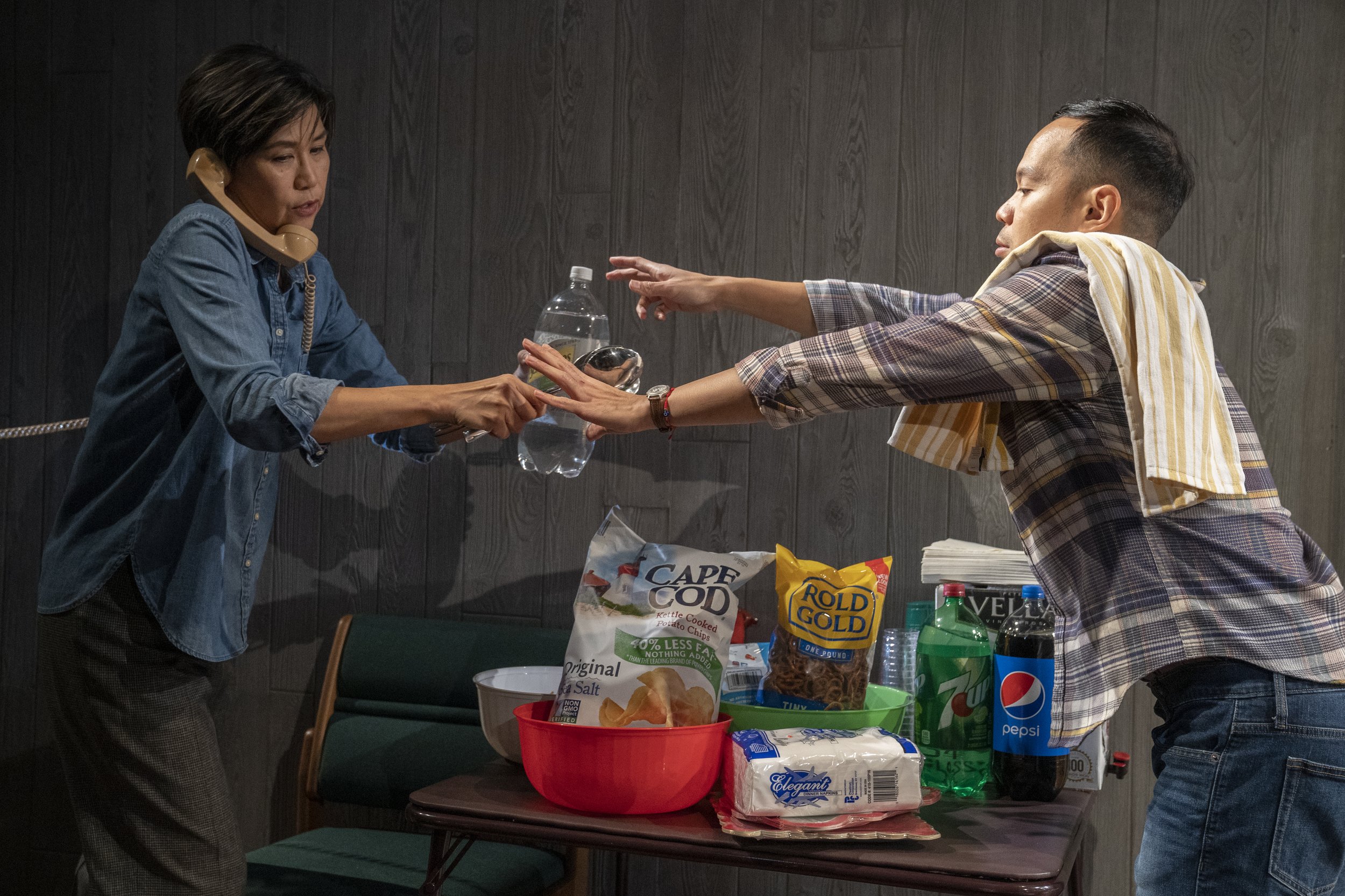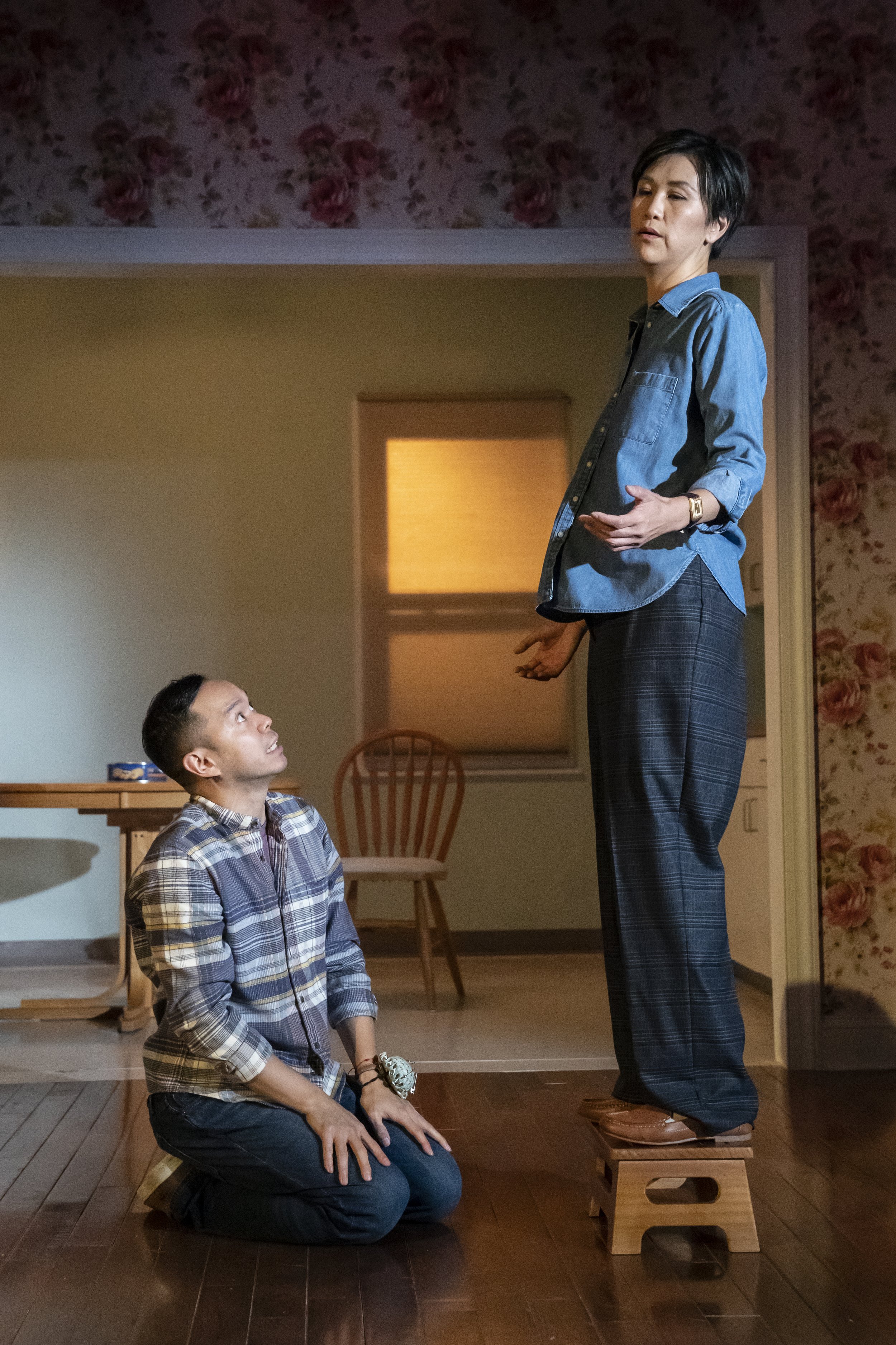
On a rainy Monday, playwright Mia Chung and I sat on a grainy zoom call. Mia was my playwriting mentor when I was in the Clubbed Thumb Early-Career Writers’ Group but it’s been a while since we’ve had a proper conversation. I’ve always felt very connected to Mia and her work, not just because we are both Asian American female playwrights, but also because we both went to Brown University for our MFAs in Playwriting during separate tumultuous transition periods in the program--and yet we still managed to have almost the same teachers. Thus I feel I am in the same lineage of playwriting as her, especially in the experimentation with theatricality. Her gravitation to theatricality makes even more sense to me when she tells me how she started getting interested in theatre:
“In college I had a student job at a theatre, so I could just see shows multiple times which was amazing. It’s so funny how not until then did I fully understand that each night could be different—I mean in small ways, like largely the [same] story was told each night but your sympathies with different characters might shift a little bit depending on how the performances went.”

It is appropriate that Mia and I started our conversation talking about repetition, or rather repetition with variations. It would be a thread throughout our conversation, and a thread throughout her play Catch as Catch Can, both in content and in context.
This ritual of performance, and its repetition and inevitable permutation, is part of what draws Mia to theatre as a storytelling format:
“It’s a way of looking at life as it’s lived.Theatre is one of those arts that after the generating creators—like the playwright and director and designers—have stepped back from the production, the project keeps going and it keeps changing because the artists that are involved at that point are the actors and they’re changing—every human being changes everyday, and the world is changing. So a line might hit really differently based on an election or a tragic incident…I think that’s kind of amazing. You’re kind of giving birth to a living thing. Any piece of art, a poem, a painting, does have a different life depending on the context, the people, and the time period that it’s being looked at. But there’s something about theatre, the fact that it’s composed of living, breathing, changing beings, namely actors, that feels like it’s an extreme of that.”
And so too was Catch as Catch Can given an opportunity to be seen in a different context, with different people, in a different time. It was first produced in NYC in 2018 by Page 73 (Side note: There is not enough celebrating of this!! I don’t know of many other playwrights who get two totally different productions of the same play in the same city within a decade who aren’t named “William” or “Arthur”!!) Mia notes that this is a “second First Production”, with one big change: all the actors in this production are Asian American, even though all the characters are white Americans. She explains in the program note why:
“I itched to investigate an early impulse: to bring the two off-stage, and yet pivotal, characters—one Korean, the other Korean American—on stage obliquely by casting the white characters with Asian American actors. My gut said that the play’s theatrical journey would be fundamentally different, but the story destination would remain the same.”
When I ask about how she’s experienced this casting difference, she notes that it “changes the play in kind of a big way and also doesn’t change it at all.”
Same but different. Change but no change. This duality swirls around the play. The three actors in the show play both the parents and their differently gendered adult children. From mom to son to mom, from dad to daughter to dad, we witness the actors pull off the herculean feat of switching generations and genders with just their bodies and voices, in some scenes over dozens of times. Occasionally we get confused--Oh was that Tim or his mom? This confusion feels intentional. We grow up and away from our parents, claiming we won’t be like them, we won’t make the same mistakes they made, we know better. But in those blips we see that it is hard to completely escape the influence of the people who formed us.

In the 2018 production, with all white actors, I experienced the play as one about inescapable inheritances, particularly white inheritance and how racism is intertwined in that. The passing along of bigotry, like illness, is an intergenerational trauma too. The actors then (and in this 2022 production) seemed to match the gender and age of the children, but not of the parents. And so the consistent authenticity throughout was their whiteness. The bond of bloodline is heightened because of the double casting.
For Mia, though, the doubling is less about making a point and more about a method to understanding. “For me form always follows function, form always follows story—I only thought of that form because I wanted to know the story of their mothers…There are so many ways to tell a story, and once I find a form like character doubling, then there’s a conversation between form and story that starts—but it’s always story that’s in the driver’s seat.”
Ah yes, the story. In the 2018 production I was so invested in the play itself and how the story was being told and not quite as invested in what was being told. But perhaps that is also because the whiteness and the racism made me less emotionally invested in the characters.
So what is the story? Catch as Catch Can is about two New England families, the LaVecchias and the Phelans. The matriarchs of the families, Roberta and Theresa, are close friends, and are particularly invested in the love lives of their children. Roberta desperately wants her son, Robbie, to get over his ex-wife, a Korean woman, and is unable to comprehend why her daughter, Daniela, is not in constant pursuit of a husband and children. Theresa is perplexed and thrilled that her son, Tim, is moving back home having recently become engaged to a mysterious Korean American woman who Theresa has only met once. All seems business as usual until an illness ruptures both families.
Even knowing the casting change going into it, I needed a minute to settle into the 2022 Playwrights Horizons production to fully understand that these two East Asian men on stage are actually two older white women. But then this funny thing happened: as the play moved forward, I sort of forgot. You would think hearing anti-Asian comments from the mouths of Asian men would heighten the whiteness of the characters, but instead it almost dampens it.
“You stop thinking about the race of the cast,” Mia observes of this production too, “And you actually are really just looking at the story and characters. Just like you have to see past gender and age, you are starting to see past race.”
In a weird way, I did. And perhaps because of that this time I felt more drawn into the story of these two families in community, struggling to truly support each other. Only when the LaVecchias put up family photos of white children on the wall did I experience the jarring reminder that the bodies we were watching were not the bodies of the characters.
And in a weird way I also constantly saw race—perhaps another shade of duality. Looking at the devastatingly defeated face of Rob Yang as Tim in the second half of the play, struggling through his illness, I was reminded of my uncle. Listening to the characters’ broad North Eastern accents, I was reminded that my dad doesn’t pronounce the r’s in “park” and “car,” not because he’s Japanese but because he grew up in Boston. And aren’t Asians racists too sometimes, even to each other?

The play, for me, is still about inescapable inheritance, but now through a different lens. Roberta and Theresa are not the mothers their sons need, but they are still their mothers. Robbie, Tim, and Daniela are not their parents, but they use the same coping mechanisms as them when faced with trauma: deny, lie, delude yourself, deflect, ignore. These three incredible actors are not just Asian American, but they are also Asian American.
I asked Mia towards the end of our conversation how she felt this play landed in her greater body of work. She is unsure at first. “Often what I write will give voice to or give a platform to voices that I feel like are overlooked or aren’t easily presented on stage, maybe because they’re not native English speakers or they’re from a different culture or from a history that is disregarded or “forgotten”. But this play is a little different in that regard…”
I hope Mia won’t mind if I disagree with that assessment. I do feel this play, and specifically this production, gives a platform to those overlooked: Asian American actors. How often are there meaty roles available for actors of Asian descent to show off their full range and skill, physically and psychologically, in one evening’s performance? As I watch Cindy Cheung slowly walk hunched over as Lon one second and then run around carrying soda bottles to set Christmas dinner as Daniela the next, or watch Jon Norman Schneider be both the overbearing mother and the son exploding at her within two lines of dialogue, I cannot help but marvel at their supreme talents. These are the kind of muscular roles actors crave, but only some even have the option to perform.
“This play is my love letter to theatre and to actors and to performers,” Mia finally concludes, “All my plays have some sort of theatrical gambit that is hard. I think it’s fun for the actor ultimately but it’s hard, and it’s hard and then fun hopefully for the audience.”
